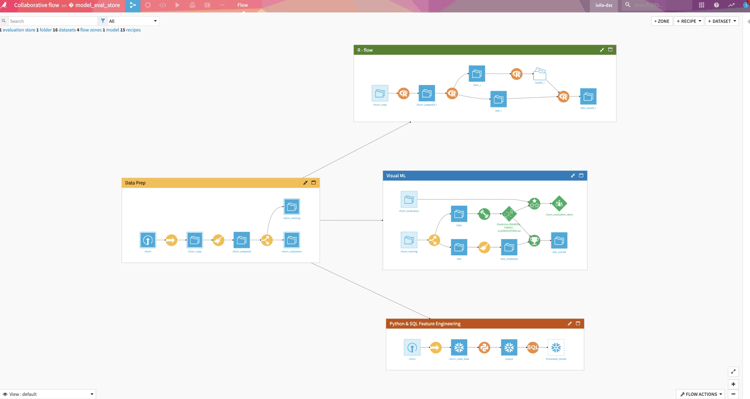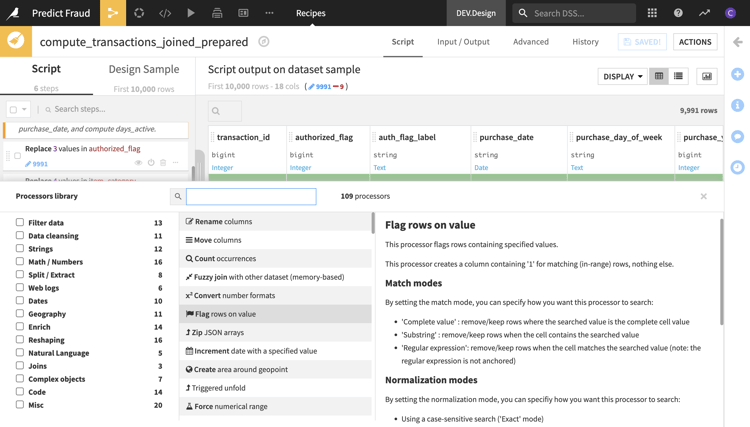Without conjunctions — such as and, for, but, yet — we’d be pigeonholed into expressing every idea in a series of short, simplistic sentences: I like running. I like cooking. I don’t like waiting in long lines. When we bring conjunctions into the mix, we have the ability to form more complex, elegant sentences and avoid the staccato-esque choppiness of multiple short sentences.
One coordinating conjunction in particular, the word “and,” is particularly powerful (and I’m not just saying that as someone who studied English language and literature in college). According to Mirriam-Webster, the primary definition of “and” is it’s “used as a function word to indicate connection or addition, especially of items within the same class or type.” By now you’re probably asking yourself, “Okay, Catie, enough with the minutiae, sheesh. What’s your point?”
More often than not, “and” denotes not having to choose between two things (of equal rank), but rather being able to have both. Let’s see how we can apply this to Dataiku’s Everyday AI platform and how the word “and” helps people avoid having to choose one feature or capability over the other.
1. Full Code AND Low Code
We believe that all employees have relevant input into the development and use of AI, though the specific nature of their contribution will be different. Data and analytics experts are more likely users of Dataiku’s code-first features, while domain experts in lines of business are more likely to prefer a no- or low-code experience.
With Dataiku, practitioners can use point-and-click tools for ease and efficiency or write custom code for maximum flexibility. At every step, the choice is up to the user. That’s the beauty of it — no one is ever on an island. Custom code elements are part of the flow and are transparently documented in the data pipeline, just like any visual element. Regardless of how they choose to work, everyone can collaborate and simultaneously contribute to data projects in a shared environment. There’s no need to choose one or the other, Dataiku caters to both.

2. Individuals AND Teams
At the individual level, common steps go more quickly thanks to Dataiku’s highly intuitive and visual interface. At the team level, collaboration goes more smoothly as team members collaborate in a single, shared environment. For specific use cases, teams can use plug-and-play Dataiku Solutions to deploy full-fledged AI solutions in hours rather than months. Finally, at an organizational level, the progress toward Everyday AI is accelerated by the ability to build on the successes of one team and diffuse them throughout the organization.
Dataiku also enables both vertical collaboration (e.g., data scientist to data scientist) as well as horizontal collaboration (e.g., analyst to a data scientist or business user). The platform is designed to be used by both individuals and teams, all with different types of expertise, on the journey to Everyday AI. Once again, there’s no need to choose one or the other, Dataiku caters to both.

3. Data Analytics AND Machine Learning
Whether you’re doing data analytics or machine learning, Dataiku meets you where you are. When it comes to analytics and business intelligence, analysts and business experts can spend less time wrangling and more time analyzing thanks to 100+ native data transformers to help them automate the tedium of data preparation and enrichment. Teams can extend the built-in tools by writing custom formulas and code for bespoke transformations and maximum flexibility, or they can use visual tools for maximum speed.

Then, once it’s time for machine learning, Dataiku augments the model development process with a guided methodology, built-in guardrails, and explainability so data scientists and analysts alike can build and compare multiple production-ready models. Advanced data experts can extend the visual machine learning interface by adding a custom Python algorithm or programmatically develop models using Python, R, Scale, Julia, Pyspark, and other languages. So, users aren’t isolating one part of the process, Dataiku enables them to do both in one place (deployment, monitoring, and governance take place there too!).

4. Elastic Cloud AND Governance
When it comes to AI in the enterprise, scale is required across multiple dimensions: The number of users (bringing in more than just data experts), the volume of data being processed, and the number of services being deployed. For example, one of the ways in which Dataiku delivers on scale is providing a fully managed Kubernetes solution that is compatible with all of the major cloud container services.
Not only is elastic computing with cloud services often the most cost-effective way to handle large and dynamic loads created by big data analysis and machine learning, but it’s also governed. Admins and IT security can see who is doing what and where and have full control of the number of Kubernetes nodes allocated to specific projects. So, organizations can elastically scale with cloud resources without sacrificing governance.
5. IT Compliance AND Self-Service Analytics
Self-service analytics need to foster collaboration and engagement between IT and business teams in order to be successful, something that is much easier said than done. Organizations need to build a solid (yet flexible) strategy that allows lines of business access to the data they need while also restricting any access they have no business need to access.

They also need to maintain a workable feedback strategy that enables users to gain access they don’t have (but need) to avoid data access problems. This balance is best struck in a centralized environment like Dataiku where roles and rights can be managed and updated easily as obligations and priorities evolve over time. Ideally, line of business professionals or analysts would be able to work with data to generate insights and data visualizations with little direct support from IT. Meanwhile, IT is responsible for data products (think managing the push from dev to production environments or helping set up automations) plus the maintenance of the data platform itself.
Why Settle When You Can Have Both?
If organizations focus on only one element (i.e., just empowering the individual or just the team) they can only get so far. But if they do both at the same time, instead of being forced to choose between one or the other, they can unlock exponentially more value from their AI initiatives. Empowering each individual with the training and education to continuously upskill and be included more regularly in analytics and AI processes will allow those data-informed employees to make more decisions with data. Ultimately, over time this will help the team build AI into all of their processes and operations.
So, the next time you’re confronted with a choice between picking two options, ask yourself why you shouldn’t just be able to have both.




